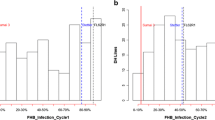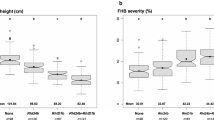Abstract
Fusarium head blight (FHB), an important disease of barley in many areas of the world, causes losses in grain yield and quality. Deoxynivalenol (DON) mycotoxin residues, produced by the primary pathogen Fusarium graminearum, pose potential health risks. Barley producers may not be able to profitably market FHB-infected barley, even though it has a low DON level. Three types of FHB resistance have been described in wheat: Type I (penetration), Type II (spread), and Type III (mycotoxin degradation). We describe putative measures of these three types of resistance in barley. In wheat, the three resistance mechanisms show quantitative inheritance. Accordingly, to study FHB resistance in barley, we used quantitative trait locus (QTL) mapping to determine the number, genome location, and effects of QTLs associated with Type-I and -II resistance and the concentration of DON in the grain. We also mapped QTLs for plant height, heading date, and morphological attributes of the inflorescence (seeds per inflorescence, inflorescence density, and lateral floret size). QTL analyses were based on a mapping population of F1-derived doubled-haploid (DH) lines from the cross of the two-rowed genotypes Gobernadora and CMB643, a linkage map constructed with RFLP marker loci, and field evaluations of the three types of FHB resistance performed in China, Mexico, and two environments in North Dakota, USA. Resistance QTLs were detected in six of the seven linkage groups. Alternate favorable alleles were found at the same loci when different inoculation techniques were used to measure Type-I resistance. The largest-effect resistance QTL (for Type-II resistance) was mapped in the centromeric region of chromosome 2. All but two of the resistance QTLs coincided with QTLs determining morphological attributes of the inflorescence and/or plant height. Additional experiments are needed to determine if these coincident QTLs are due to linkage or pleiotropy and to more clearly define the biological basis of the FHB resistance QTLs. Plant architecture should be considered in FHB resistance breeding efforts, particularly those directed at resistance QTL introgression and/or pyramiding.
Similar content being viewed by others
Author information
Authors and Affiliations
Additional information
Received: 22 November 1998 / Accepted: 2 June 1999
Rights and permissions
About this article
Cite this article
Zhu, H., Gilchrist, L., Hayes, P. et al. Does function follow form? Principal QTLs for Fusarium head blight (FHB) resistance are coincident with QTLs for inflorescence traits and plant height in a doubled-haploid population of barley. Theor Appl Genet 99, 1221–1232 (1999). https://doi.org/10.1007/s001220051328
Issue Date:
DOI: https://doi.org/10.1007/s001220051328




